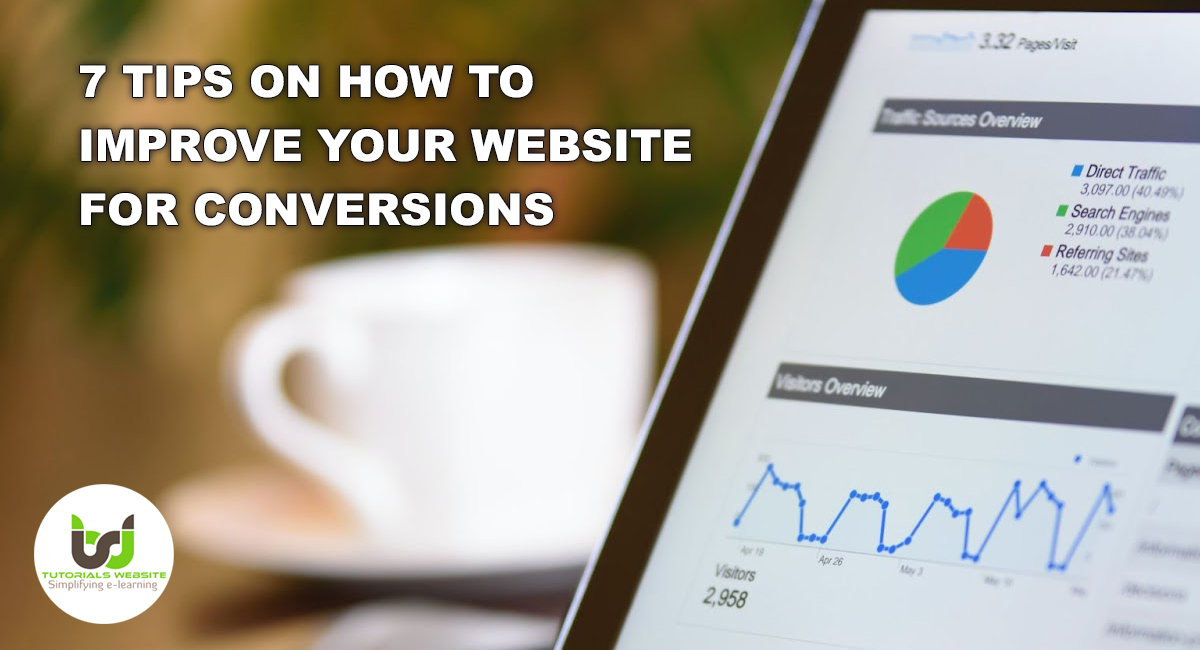Use the following guide as a reference to improve your website for conversion rates and optimize the user experience. This content is like a roadmap to a successful traffic generation marketing strategy. As a whole, these tips can help guide your organization toward better practices, principles, and protocols and help build more knowledge over time. Each part represents an opportunity to measure, experiment, and adjust. See below tips.
Understand What a Website Conversion Rate Is
What is a website conversion rate, you might ask? Understanding conversion rates can help provide clues about your audience engagement approach. SEO copywriting experts should be conversion rate experts as well. The content put forth ought to drive action on the part of the user of the website or application. There are generally at least three key elements that we can use to optimize conversion rates.
- Design
- Copywriting
- Analytics
Test various phases of each to determine the best conversion rates. A conversion rate is the amount of total users divided by those users that took a specific action intended as prompted by the site or app.
How to Measure Your Conversion Rates
Metrics for conversion rate are what is known as analytics data, which can provide snapshots of user engagement and actions. Measuring conversion rates involves the simple formula above. However, as is the case with most data, the measurements of actions can be nuanced and further insights can be analyzed by your team. And this really depends upon the type of data you are looking at. Here are some metrics to consider when analyzing conversion rate:
- Sources of traffic
- New visitor vs. return visitor conversions
- Interaction types
- Total values of each transaction/action per visit
- Total value across all transactions/action per visit
- Cost of conversion
- Bounce rate
- Pages that cause users to leave or abandon cart
- Mobile vs desktop/other
Analyze and take stock of each of these elements to help your organization achieve better results.

Photo by PhotoMIX Company from Pexels
Link: https://www.pexels.com/photo/black-samsung-tablet-computer-106344/
Create Engaging Call-to-Action (CTAs)
Part of getting the desired results from the analysis is to create executable tasks the user must perform and guide them through the process. This is where copywriting expertise comes into the picture. Great SEO copywriters know how to write Calls-to-Action or CTAs. A CTA is a linguistic cue to prompt the user to take action or perform a task. The action could be to make a purchase, fill out a form to collect information, make an offer, enter a bid, make a selection, follow a series of steps, etc. Combined with the right user experience (UX) and user interface (UI) design scheme, the call-to-action can stimulate a guided visual response while also appealing to the user’s logic.
Also Read: How a Responsive Website Helps in Growing Your Business
Remove Any Unnecessary Distractions
Many designers and webmasters fail to engage their intended audience even after analyzing and collecting the needed data. This is often because of distractions in the form of either text information or the visual design components. Users tend to take things as a whole first, then scan for detail from that point on. Simple is better if you want to optimize the user experience.
Think of the UI like a vending machine. A simple box confronts the user with easy-to-see options that correspond to buttons. These cues guide the user to make their preferred choice. A simple background image or brand logo is usually all you have in the background with consistent vibrant color that vibes with the product type. Additional images with no clear purpose and copy that is written with too much complexity or more information than is necessary only confuses and/or distracts the user from making a choice. Avoid this.
Add a Video to Improve Retention
Video remains one of the best ways to retain the attention of users online. The continued application of video due to advances in streaming and compression quality has led to a vast library of available video content. According to data from Insivia, audiences retain much more information from video than text. They retain about 95 percent of a video message compared to only 10 percent from a written one. Use video to drive more actionable results from your user base.

Photo by CoWomen
Link: https://www.pexels.com/photo/woman-sitting-in-front-of-camera-2041394/
Now, Add Social Media Proof
Social media has taken the world by storm in the last couple of decades. The growth has been phenomenal. It is expected by most consumers now that social media credentials exist alongside an organization’s brand and digital asset channels such as your website or app. A commonly used design asset is the social media icon bar, often displayed near crucial brand elements or important content. This helps drive the user to associate with your brand or organization in some way and become an advocate, influencing others to make similar decisions on the platform.
Embed Live Chat
One of the most important elements of a site or app with solid conversion rates is the live chat feature. This is because it reinforces the positive user experience by helping solve problems and guiding the user. It also gives the user a sense that you are supporting them in their quest and that you want to help them solve a problem. The embed live chat is a solutions-driven element that accelerates your conversion rate improvement strategy.

Photo by picjumbo.com from Pexels
Link: https://www.pexels.com/photo/woman-wearing-earpiece-using-white-laptop-computer-210647/
Always Use Mobile Responsive Design Throughout
Like social media, mobile device usage has grown exponentially and has connected billions of people, organizations, and technology across the globe. Mobile response is an even greater expectation now than a social media icon bar. Nearly everyone carries or uses a mobile device in the United States. The mobile responsive design should incorporate the same strategies and elements of UX in the UI for the mobile version. Simple prompts here with prominence and clear CTAs are of the utmost importance here as are the ergonomics and aesthetics of the design scheme.
Conclusion
Use this guide in principle as a roadmap that can be modified to meet specific business or organizational goals. The elements and tips above can help guide your team toward a more successful route to traffic generation marketing. Use them to analyze your data, then test and adjust your copywriting/video content and visual cues.

Tim Absalikov is the Acting CEO of Lasting Trend SEO in NYC. Tim is an expert in technical optimization. He has a deep understanding of SEO, SEM, UX and UI considerations, shopping campaigns, PLA, RLSA, dynamic retargeting, works with E-Commerce and Web Analytics





